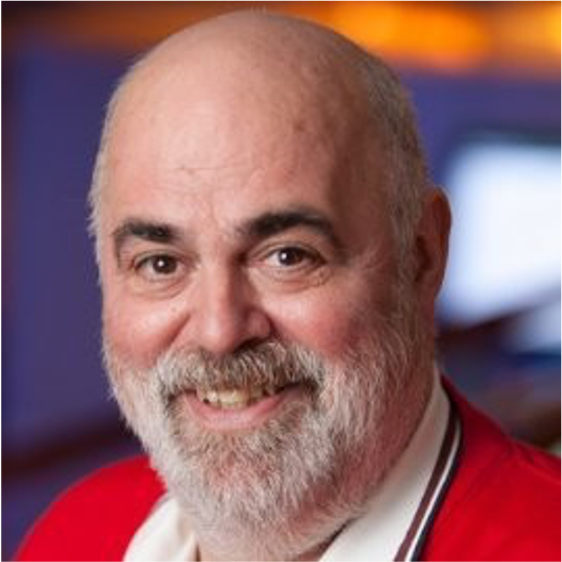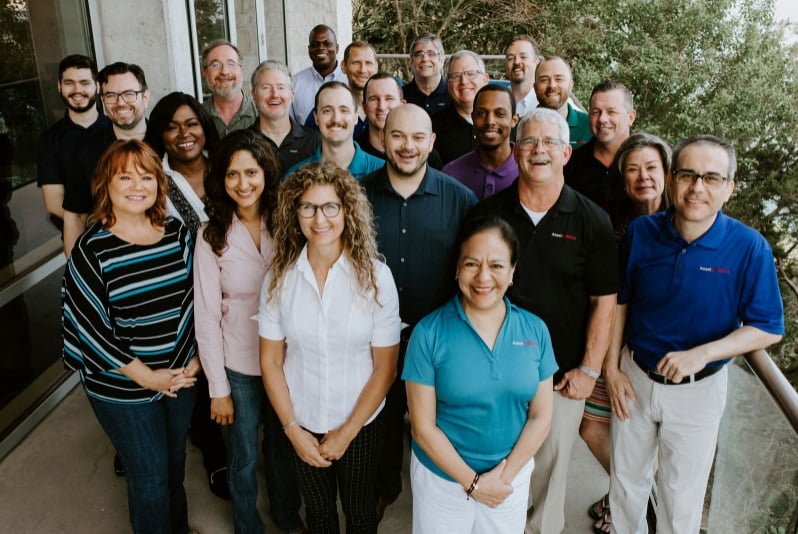Why you should contact Brian Carlson about facility management software

Greg Jarboe

In my early posts, I encouraged readers of this blog to contact one of the higher education experts at AssetWorks if they had questions or wanted to learn more about the company’s AiM Enterprise Facility Management Software solution. But, then I figured out that it would be more helpful to interview each of the members of the team, so that you knew something about them before you call them about their facility management software for higher education institutions.
Actually, you will probably Google their name before you contact someone. But, that presumes that you know their name. And, it also assumes that you want to tap into their expertise and experience.
So, in this post, I will share the reasons why you should contact Brian Carlson, a Senior Account Manager at AssetWorks. Below are my questions (Jarboe) and his answers (Carlson).
Jarboe: Brian, if somebody Googled you and read your post, “5 Ways to Maximize Facilities Management System Integration ROI,” then they learn how the facilities group at the University of New Hampshire used Standard Data Connectors (SDC’s) to integrate AiM with other campus systems. But, tell me what a director of facilities of a college or university might want to know about you before, let's say, your first call.
Carlson: To start with, I’d like to mention that I'm a dyed-in-the-wool facilities person. I started my journey at Iowa State University back in the 90’s, as student systems analyst. I set up preventative maintenance routines for refrigerators and other assets. This involved working with technicians in mechanical spaces, steam tunnels, and on roofs. I'm grateful for the opportunity that was given to me, which led me into the software side of things and that's where I've been ever since.
I'm an engineer, by education so I'm always looking for solutions to whatever challenges ar in front of me. Anyone that knows me will know I’m very much also focused on relationships. My role on the AssetWorks accounts team is to ensure that all of our customers get value from the relationship with AssetWorks. When a customer chooses AssetWorks, it isn't a one, two, or even a five-year commitment. By and large, our customers make a choice to be with us for a much longer period of time than that. We have customers that measure their tenure in decades. A relationship of that magnitude isn't something that AssetWorks or I take lightly. I hope to maintain or add value with each interaction I have.
Jarboe: Great. So Brian, since you've been in the field for a while, what do you think are the biggest challenges facing a director of facilities at a higher education institution, particularly one with a complex infrastructure and changing needs?
Carlson: That's an intriguing question. On the one hand, a year or two ago, you could have taken that question and decided aging infrastructure and the challenges that go with that as an answer. Securing funding to keep things in order, training the staff to do the work, acquiring and implementing technology to support these activities. All of those would be valid points.
On another hand, we still face all those same challenges. However in the past year, we've had to figure out how to do all those things remotely, from training the staff, to implementing new procedures, and just having the meetings that you need to have to keep things running.
The open secret is that the facilities we're maintaining still need attention, even if no one's there. So that's an interesting topic as well. One of the inspiring things that I've seen in the past year, is the solutions that our customers have come up with to face these new challenges. Using the tools that AssetWorks provides to resolve use cases that we've never considered when we put the software together. Our customers built their solution and rolled it out. I've been amazed by what our community came up with to meet the challenges of the past year.
Jarboe: Well, that leads right into my next question. What do you think are the biggest opportunities that a director of facilities in the college or university would be interested in talking to you about in 2021?
Carlson: I would say that probably the biggest opportunity that we're seeing is the opportunity to review everything. It's been a life-changing year for everyone and so I've talked with a number of customers who are taking a step back. Reviewing what they're doing, asking the tough questions, "Does this work for us now? And will it work for us down the road?" Should they bring in new tools, or look at how we’re using the tools that we have? Basically, everything's on the table for discussion.
As I've been speaking with our community, and talking with them about how they are improving, it’s fascinating to hear how they would like to use AiM/ReADY/Go. Whether it's implementing one of our Go mobile solutions, so that their technicians don't need to spend as much time indoors exchanging paperwork in close proximity to each other. Perhaps they're implementing a new ERP system and they want to look at redoing their interfaces with our off-the-shelf Standard Data Connectors. Maybe they need a tool to submit “reopening plans” and route them for review and approval and chose ReADY Request to make that a reality. The opportunity that we have to be able to evaluate everything and come up with new solutions is exciting.
Jarboe: Okay, so you and I both know that the higher education institution buying process is incredibly complex and that those decisions generally go through multiple stages, including problem identification, solution exploration, requirements building, supplier selection, validation, and consensus-building. So, when in this buying process is it really the best time for a director of facilities to contact you?
Carlson: I would start off by saying there certainly isn't a bad time to contact us. If I had to give an answer, probably the sooner the better. I would expand on that by saying the AssetWorks brand has been around for quite some time. Why that matters is the experience that we bring to the table. Our team members, like our customers, many of them measure their educational sector facilities experience in decades. If you put them in a room together, that collective experience adds up to centuries. It's quite humbling to be a part of that. The implementations that we do are far too important to just leave to just anyone. A sharp kid right out of school may be able to talk a good game, but have they actually worked in a facilities department like the AssetWorks team has? Do they have more than just a passing understanding of what this facilities organization does, and why that's important? The AssetWorks team has seen our community’s challenges and worked with them to implement solutions. Chances are whatever the challenge is that they are facing, and the AssetWorks team has guidance that we can share.
Jarboe: Great. Well, Brian, my final question is this: If a director of facilities at a college or university talks to anyone, they generally want information that is relevant, useful, credible, and also easy to use quickly and effectively. So, why are you in a position to provide that to them?
Carlson: In short, because of the customers that leverage AiM today, that facility manager, their peer, who uses AiM every day, and demands the exact same thing of AssetWorks. When we're designing and improving AiM, we solicit and listen to our customers' feedback. That same use case that they have is one that we've heard from our customers and have been working on solving. We don't develop software in a vacuum. We have prescribed processes to engage clients before and during design, to ensure that what we build meets their needs.
Getting back to getting data out of AiM, we're leveraging API technology to enable a variety of tools to not to only pull the data out, but to organize it and display it the way they want to see it. Everybody wants to organize information a bit differently. That's the challenge that we need to meet. We've opened the AiM up in a lot of ways. Enabling tools to get at the information that they need to make decisions.
About Greg Jarboe
Greg Jarboe is the president and co-founder of SEO-PR, which has provided services to the University of the Pacific, the University of Pennsylvania, Rutgers University, and Dickinson College. Greg has been an instructor in several Rutgers Business School Mini-MBA programs.
In 1999, Greg became the VP of Marketing at WebCT, which had been developed by Murray Goldberg, a noted Canadian educational technologist and a faculty member in the Department of Computer Science at the University of British Columbia in Canada. That’s when Greg discovered that the “California roll” had been created at a Vancouver restaurant in the late 1970s.
Subscribe to AssetWorks' Blog & Newsletter
We send out periodic updates to our facilities community.
Read On

Top 4 Challenges that Universities face with Facilities Service Requests
While virtually every organization in every industry that owns and operates facilities has the...
Learn more arrow_forward
Focused Facilities Management Software Solutions for Education and Government Facilities Owners
Our primary focus at AssetWorks has always been Higher Education Facilities Management. Over the...
Learn more arrow_forward
Typical facilities software vs #1 facilities management software
There are a number of facilities management software companies out there. Many are focused on the...
Learn more arrow_forward

